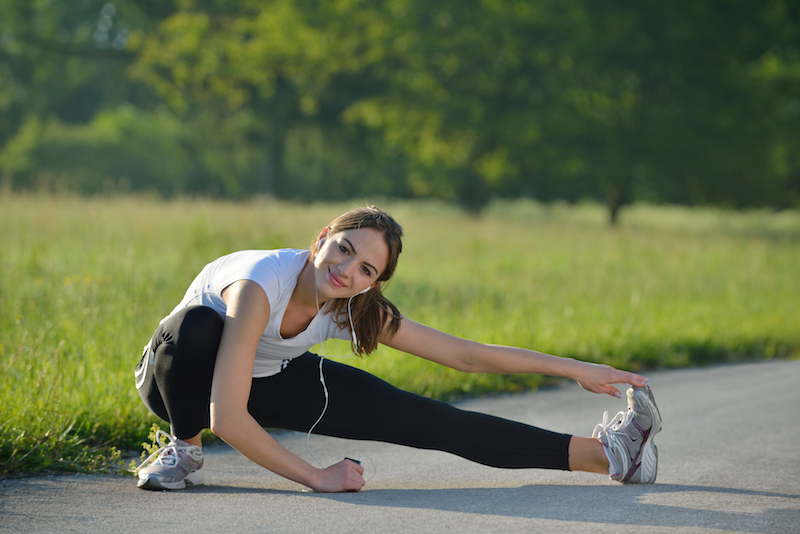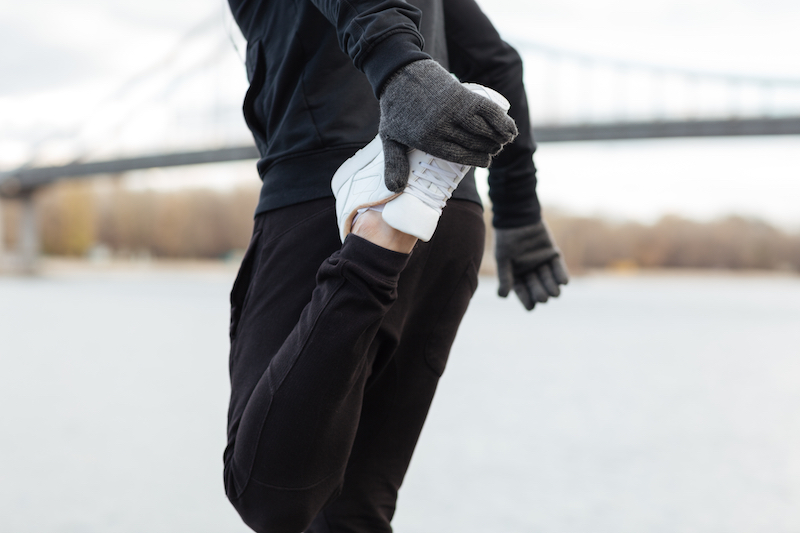
When you think of stretching, you probably picture someone who’s sitting on the floor and bending forward to touch their toes.
But there are lots of other ways to stretch.
You can perform something called dynamic stretching, which mimics the movement of the sport or workout you’re about to do to get your muscles ready.
Or if you’re sore after a long workout, you can use a foam roller on your muscles to relax them.
Once you find your perfect regimen, what kind of results can you expect from stretching?
Once you start stretching regularly, you’ll start to notice that you’re less stressed. Your muscles will also feel looser and more relaxed, and you may even get an energy boost.
After a month or two of consistent stretching, your muscles will become more flexible and your range of motion will increase. Your balance will start to improve and your posture will get better.
You may also have fewer aches, pains, and injuries as your muscles get more flexible. Your exercise performance will improve too and you’ll have better circulation.
To learn more about the many benefits of stretching, I spoke to a few fitness experts. Keep reading to hear what they had to say.
Decreased stress
One of the first things you’ll notice after starting a regular stretching routine is that you’re less tense and stressed, both physically and mentally.
Stretching relieves muscle tension, which can help you feel more relaxed, and puts you in a better headspace.
Dr. Chad Beauchamp, physical therapist and founder of REPAIR Sports Institute, said that stretching is “a great way to actively meditate” and can help improve your mental clarity and decrease stress.
Research has also shown that stretching can get you in a better mood.
In a recent study, participants who performed a stretching routine had less self-reported muscle tension and felt happier afterwards. They also had lower diastolic blood pressure and respiration rates, which suggests that stretching relaxed them.
So if you’re looking for a new way to unwind at the end of the day, give stretching a shot.
Better balance
Another benefit you’ll notice soon after you start stretching is improved balance.
In a recent study, participants tried to stand on a stabilometer, a type of instrument that measures balance, for as long as they could.
Participants that did 30 minutes of static stretching before their balance test were able to stay on the stabilometer 11.4% longer than the control group.
So if you start a regular stretching routine, you can expect to see pretty immediate improvements in your balance.
More mobility and flexibility
This is probably the main goal of most people who start stretching frequently.
Austin Martinez, education director at StretchLab says:
“The primary focus of stretching is to provide a stimulus to muscle tissue and fascia in order to make changes. Changes that occur at the muscular level include increasing the number and length of sarcomeres and lengthening of the muscle fibers themselves.
“These physiological changes precipitate physical changes, that are referred to as the core benefits of stretching.
“These core benefits are: increased range of motion, injury prevention, increased flexibility, improved performance and posture, decreased soreness post activity and decreased muscular tension.”
As we age, we start to lose some of our flexibility and range of movement.
As our tissues lose water and our muscles lose elasticity, performing everyday tasks like bending down to tie our shoes gets harder.
It’s easier to maintain flexibility than to regain it once it’s lost, so even people in their 20s and 30s should consider starting a stretching routine so that they don’t have mobility issues when they’re older.
Becoming more flexible can also help you in the here and now.
Stretching lengthens your muscles and helps you move more freely, which can significantly improve your exercise performance.
Going back to Dr. Beauchamp:
“There are many specific health benefits to stretching such as improvement in muscle tone and tension that ultimately lets the body functionally move more how it should. Long story short, regularly changing the oil and rotating your tires on your car allows the car to perform better.”
Stretching will increase your mobility and ultimately help you get more out of your workouts.
You’ll be able to squat deeper, really lean into your lunges, and challenge yourself at the gym more.
Less pain

If you have lots of little aches and pains, stretching may be able to help you get rid of them.
Jen Perry, fitness and travel expert, told me that road cycling gave her knee pain, but stretching helped resolve it.
“I developed slight pain on the side of my left knee and was a little concerned about having a knee problem. My hips were also extremely tight. However, I began routinely stretching and foam rolling regularly and discovered my knee pain went away after consistently doing these.”
Research has also shown that stretching can alleviate pain.
In one study, participants did a stretching and strengthening routine for about 20 minutes 3 times per week.
At the end of the 8 week exercise program, they had a significant reduction in pain, especially in their shoulders and back.
Stretching relieves pain by loosening tight muscles that may be putting excess pressure on your joints and spine.
It also keeps your joints moving and increases their range of motion, which can help prevent joint degeneration, a common cause of chronic pain.
(Stretching is a great way to recover from being sore after leg day.)
Fewer injuries
Stretching increases your flexibility and joint range of motion, which can help relieve pain and prevent injuries.
According to Bonnie Frankel, top athlete and fitness expert:
“Most injuries are caused by not stretching. Stretching your body can save you a visit to the chiropractor and prevent injury.”
This is especially true if your workouts involve a lot of bouncing and jumping.
When you bounce or jump, your muscles undergo something called a stretch-shortening cycle, which is an active muscle lengthening followed by an immediate shortening.
A recent study showed that athletes who play sports like soccer and football that have a high intensity of stretch-shortening cycles can significantly decrease their risk of injury by stretching.
Research suggests that stretching may not be as effective for injury prevention if you’re participating in an activity without much bouncing, like swimming or cycling.
But it still may be worth it to incorporate stretching into your routine for the other benefits it provides, like decreased stress and better posture.
(Also great for injury prevention and rehab? Swimming!)
Better posture
Hunching over our computers and phones causes many of us to have poor posture.
But according to Suzanne Wylde, fitness and stretching expert, you can correct it by adopting a regular stretching routine.
“Posture improves a lot and I have found that people’s centre of gravity moves back towards their heels as they unhunch and their shoulders open, making them feel more relaxed, grounded and confident.”
Stretching loosens tight muscles that contribute to poor posture and encourages proper body alignment, helping you stand taller and feel better.
Increased circulation
Stretching for just a few minutes each day can increase circulation throughout your whole body.
When you stretch, your muscles get more blood flow and nutrients, which helps them bounce back from exercise and injury faster.
The rest of your body and your brain will also get extra blood flow, which can give you a boost of energy and make you feel more awake.
So if you’re feeling sluggish and struggling to get through the day, try taking a quick stretch break.
Wrapping up
Many people don’t think stretching is necessary and decide to skip it, which causes them to miss out on a lot of potential health benefits.
(Or they decide they hate stretching entirely!)
Studies have shown that stretching can help decrease stress, reduce muscle tension, and make you feel happier.
It can also improve your flexibility, balance, and posture. You may even notice that you have fewer aches and pains and are less susceptible to injury after adopting a regular stretching routine.
Stretching can also increase the circulation to your muscles, which can help you recover from exercise faster.
And because stretching improves your mobility and helps your body move as it should, you’ll be able to give your all at the gym and get more out of your workouts.
Just remember, you’ll need to put in the time to see the best results from stretching.
Austin Martinez from StretchLab sums it up:
“Stretching as with anything worthwhile in life, requires time and effort. While you may feel good after one session, meaningful results take time. The current literature tells us it takes roughly 6-8 weeks of consistent stretching to make long-term changes to your muscle flexibility.”
Give it time. It’ll be worth it in the end!
For more great recovery options check out the results you could see from:
Hope this helps.